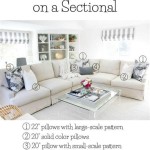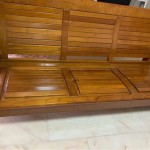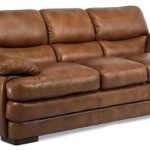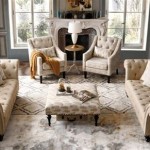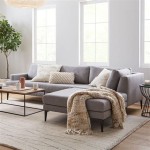Harmonizing Textures: Mixing Leather Sofas and Fabric Chairs in Interior Design
The practice of integrating leather sofas with fabric chairs represents a nuanced approach to interior design, demanding careful consideration of texture, color, and form. Successfully blending these seemingly disparate materials can result in a visually compelling and comfortable living space. The key lies in understanding the inherent characteristics of each material and strategically employing them to create a cohesive and balanced environment.
Leather, known for its durability, sophistication, and tactile quality, often serves as a focal point in a room. Its smooth, sometimes glossy surface contrasts sharply with the softer, more varied textures of fabric. Fabric chairs, available in an array of weaves, patterns, and colors, offer an opportunity to introduce visual interest and personalize the space. The successful integration of these elements requires a deliberate strategy that takes into account the room's overall aesthetic, size, and lighting.
One common misconception is that leather and fabric combinations are inherently clashing. However, the perceived tension between these materials can be strategically managed to create a dynamic and visually stimulating interior. The inherent contrast, when properly harnessed, can add depth and dimension to a room, preventing it from appearing monotonous or sterile.
The first step in achieving a harmonious balance is to establish a clear design objective. This involves determining the desired mood or atmosphere for the room. For example, a formal living room might benefit from a more structured approach, employing classic fabric patterns like damask or velvet to complement a traditional leather sofa. Conversely, a more casual space might incorporate textured linen or woven cotton chairs to offset a modern leather sectional.
Color plays a pivotal role in uniting leather and fabric pieces. Selecting colors that complement each other or fall within a specific color palette is essential. Neutral tones, such as grays, beiges, and creams, often serve as a safe and versatile foundation. These colors allow the textures of the leather and fabric to take center stage while maintaining a sense of visual unity. Introducing accent colors through throw pillows, rugs, and artwork can further enhance the overall aesthetic and create a sense of cohesion.
Understanding Texture and Scale
The interplay of texture is paramount when mixing leather and fabric. Opposing textures, when thoughtfully combined, can create visual interest and prevent the room from feeling flat. For instance, a smooth, aniline leather sofa can be paired with chairs upholstered in a heavily textured fabric like bouclé or tweed. This contrast creates a tactile experience that engages the senses. Furthermore, scale is an important factor to consider. The size and proportion of the sofa and chairs should be balanced to avoid overwhelming the space. A large, imposing leather sofa might be best complemented by smaller, more delicate fabric chairs.
Conversely, a smaller, more streamlined leather sofa could be paired with larger, more substantial fabric chairs. This consideration extends to the details of the furniture, such as the legs and arms. Matching or complementing the style of the legs, whether they are wooden, metal, or upholstered, can help tie the pieces together. Similarly, the shape and style of the arms should be considered to ensure they harmonize with each other.
The selection of fabric is crucial. Different fabrics possess distinct characteristics that can significantly impact the overall look and feel of the room. Velvet, with its luxurious sheen and soft texture, adds a touch of elegance and sophistication. Linen, known for its natural drape and breathable quality, creates a relaxed and casual atmosphere. Cotton, a versatile and durable fabric, is suitable for a wide range of styles. When choosing a fabric, it’s important to consider its maintenance requirements and suitability for the intended use. For high-traffic areas, durable and stain-resistant fabrics are recommended.
Patterned fabrics can introduce visual complexity and personality to the space. However, it’s important to use patterns judiciously to avoid overwhelming the room. A general rule of thumb is to limit the number of patterns used and to ensure that they complement each other in terms of color and scale. A large-scale floral pattern might be paired with a smaller-scale geometric pattern, or a solid-colored fabric can be used to balance out a more intricate pattern. Ultimately, the goal is to create a visually appealing composition that reflects the homeowner's personal style.
Lighting plays a significant role in how textures and colors are perceived. Natural light enhances the richness and depth of leather, while artificial light can accentuate the texture of fabrics. Experimenting with different lighting options, such as ambient, task, and accent lighting, can help create a warm and inviting atmosphere. Strategically placed lamps can highlight specific features of the furniture, such as the grain of the leather or the intricate weave of the fabric.
Leveraging Accent Pieces and Accessories
Accent pieces and accessories provide an opportunity to further unify the leather and fabric elements. Throw pillows, blankets, and rugs can be used to introduce complementary colors and textures. A plush throw blanket draped over the back of a leather sofa can soften its appearance and add a touch of warmth. Similarly, strategically placed throw pillows in coordinating fabrics can tie the chairs and sofa together. Rugs, in particular, serve as a grounding element, anchoring the furniture and defining the seating area. The color and pattern of the rug should complement both the leather and fabric, creating a cohesive and visually appealing foundation.
Artwork and decorative objects can also contribute to the overall aesthetic. Choosing artwork that incorporates similar colors or themes can help tie the room together. Decorative objects, such as vases, sculptures, and bowls, can add visual interest and personality to the space. These elements should be carefully selected to complement the style and scale of the furniture and to reflect the homeowner's personal taste.
The arrangement of furniture is another critical factor to consider. The placement of the leather sofa and fabric chairs should be carefully considered to optimize both functionality and aesthetics. A common approach is to arrange the furniture around a focal point, such as a fireplace or a coffee table. This creates a sense of intimacy and encourages conversation. The spacing between the pieces should be sufficient to allow for comfortable movement and circulation. Avoid overcrowding the room, as this can create a cluttered and overwhelming feeling.
Consider the room's layout and traffic patterns when arranging furniture. Pathways should be clear and unobstructed to ensure ease of movement. The furniture should be positioned to take advantage of natural light and views. If the room has a particularly striking view, the furniture should be arranged to maximize the enjoyment of that view. The placement of the furniture should also take into account the acoustics of the room. Hard surfaces, such as tile or hardwood floors, can amplify sound, while soft surfaces, such as rugs and upholstered furniture, can absorb sound.
Considering Style and Overall Aesthetic
The overall style and aesthetic of the room should guide the selection of leather and fabric. A modern room might benefit from clean lines, minimalist designs, and neutral colors. In this case, a sleek leather sofa with simple fabric chairs could create a sophisticated and contemporary look. A traditional room, on the other hand, might incorporate more ornate details, richer colors, and more elaborate patterns. A classic leather chesterfield sofa paired with velvet or damask upholstered chairs could create a timeless and elegant ambiance.
Eclectic styles offer even greater flexibility. Combining different styles and eras can create a unique and personalized look. For example, a vintage leather sofa could be paired with mid-century modern fabric chairs to create a unique and eclectic space. The key to successfully mixing styles is to maintain a sense of balance and cohesion. This can be achieved by repeating colors, textures, or patterns throughout the room. It is important to exercise restraint and avoid overwhelming the space with too many competing elements.
Ultimately, the goal is to create a space that is both visually appealing and comfortable. The selection of leather and fabric should be driven by both aesthetic considerations and practical needs. It's important to choose materials that are durable, easy to maintain, and suitable for the intended use. The furniture should be arranged in a way that is both functional and inviting. The room should reflect the homeowner's personal style and create a welcoming atmosphere.
By carefully considering texture, color, scale, and style, it is possible to create a harmonious and visually stunning interior that seamlessly integrates leather sofas and fabric chairs. The result is a space that is both elegant and comfortable, reflecting a thoughtful and considered approach to interior design.

Living Room Furniture Mixing Leather And Fabric Colorado Style Home Furnishings

Can You Mix Leather And Fabric Furniture

Living Room Furniture Mixing Leather And Fabric Colorado Style Home Furnishings

Living Room Furniture Mixing Leather And Fabric Colorado Style Home Furnishings

How To Mix Leather And Fabric Furniture

Living Room Furniture Mixing Leather And Fabric Colorado Style Home Furnishings

Can You Mix Leather And Fabric Furniture

How To Mix Leather And Fabric Furniture

Mixing Diffe Types Of Furniture Styles In 2024
Can You Mix Leather Sofas With Fabric Quora

